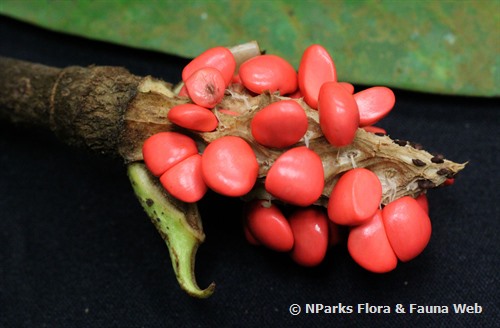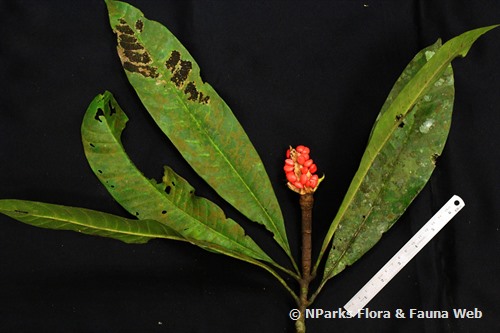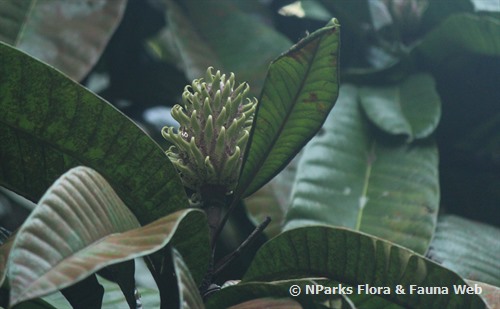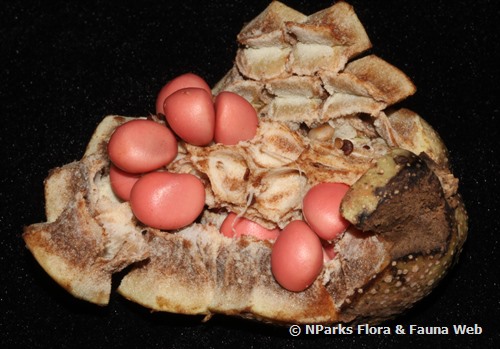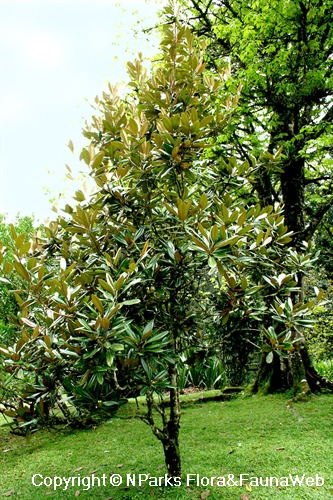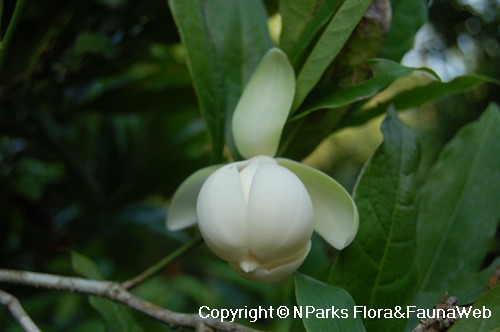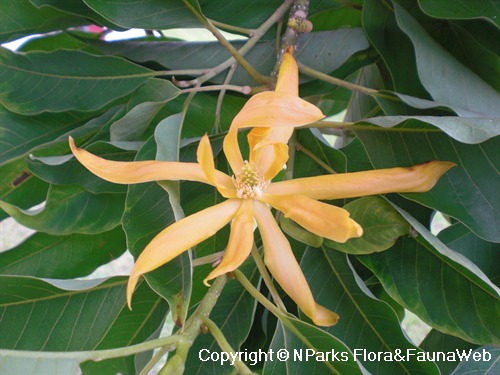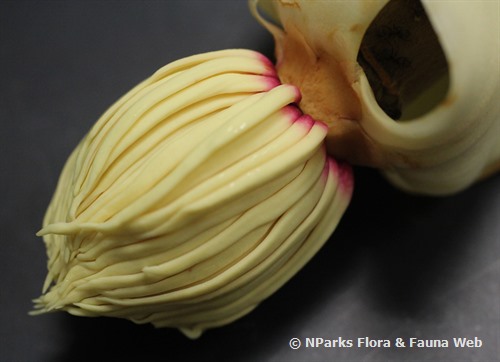
Name
Classifications and Characteristics
| Plant Division | Angiosperms (Flowering Seed Plants) |
|---|---|
| Plant Growth Form | Tree |
| Mode of Nutrition | Autotrophic |
| Plant Shape | Rounded, Irregular |
| Maximum Height | 40 m |
Biogeography
| Native Distribution | Sumatra, Banka, Peninsular Malaysia, Singapore, and Borneo |
|---|---|
| Native Habitat | Terrestrial |
| Preferred Climate Zone | Tropical |
| Local Conservation Status | Native to Singapore (Critically Endangered (CR)) |
Description and Ethnobotany
| Growth Form | Magnolia singapurensisis a tree up to 40 m tall, with a spreading crown. Its greyish-brown bark is smooth. |
|---|---|
| Foliage | Its spirally arranged, stalked leaves have thinly leathery leaf blades that are usually oval to drop-shaped and 30–70 by 8–25 cm. The leaf blades are also covered with hair below when young, but hairless when mature. Its conical stipules are joined to the leaf stalks, leaving behind a triangular scar. |
| Flowers | Its flowers have petals and sepals that are undifferentiated (known as tepals) and are arranged into outer and inner whorls. Its stoutly-stalked flowers are large, and bear creamy-white tepals. The outer tepals are hairless and 5–8 cm long, while the inner tepals are generally 2 cm shorter. |
| Fruit | Its fruits are yellowish, 10–15 by 6–7 cm, and have seeds that are covered in orange-red or white fleshy pulp. |
| Habitat | It grows in primary rainforests up to 600 m altitude. It occurs locally in Nee Soon Swamp Forest. |
| Associated Fauna | Its flowers are insect-pollinated. |
| Cultivation | It can be propagated by seed. |
| Etymology | Latin Magnolia, commemorating Pierre Magnol (1638–1715), a French professor of botany and the director of the Botanic Gardens in Montpellier; Latin singapurensis, of or from Singapore, referring to one locality in the natural distribution of this species |
Landscaping Features
| Landscaping | It may be suitable for parks. Its tolerance for wet conditions also makes it suitable for water-logged areas or streamside planting. |
|---|---|
| Desirable Plant Features | Ornamental Flowers |
| Landscape Uses | Suitable for Roadsides, Parks & Gardens |
Plant Care and Propagation
| Light Preference | Full Sun |
|---|---|
| Water Preference | Lots of Water, Moderate Water |
| Plant Growth Rate | Moderate |
Foliar
| Mature Foliage Colour(s) | Green |
|---|---|
| Mature Foliage Texture(s) | Leathery |
Floral (Angiosperm)
| Flower Colour(s) | Cream / Off-White |
|---|
Fruit, Seed and Spore
| Mature Fruit Colour(s) | Yellow / Golden |
|---|
References
| References | Ridley, H. N.. 1923. The Flora of the Malay Peninsula, Volume.2. . London: L. Reeve & Co., Ltd. 672 |
|---|
Image Repository
Others
| Master ID | 33324 |
|---|---|
| Species ID | 7738 |
| Flora Disclaimer | The information in this website has been compiled from reliable sources, such as reference works on medicinal plants. It is not a substitute for medical advice or treatment and NParks does not purport to provide any medical advice. Readers should always consult his/her physician before using or consuming a plant for medicinal purposes. |

